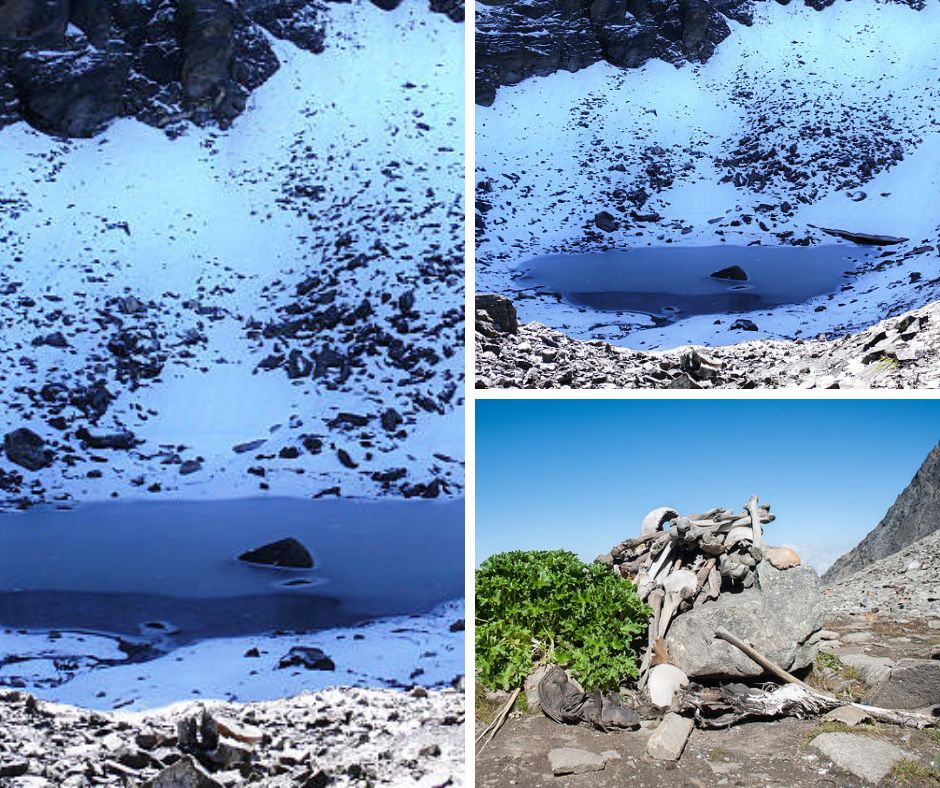Nestled high within the Indian Himalayas, Roopkund Lake has long been shrouded in mystery. Known for its eerie panorama and the macabre discovery of human skeletons, this glacial lake, located at an altitude of about five,029 meters, has involved each researchers and adventurers alike. The enigma of the Roopkund Lake Skeletons increases numerous questions: Who have been these people? How did they die? Why had been they there? In this text, we delve into the chilling mystery surrounding these skeletal stays, exploring numerous theories and the present day clinical insights.
The Discovery of Roopkund Lake Skeletons
The life of the skeletons at Roopkund Lake become first said by way of a British woodland ranger in 1942. Since then, the website has garnered large attention because of the sheer quantity of bones scattered across the lake. Initial estimates cautioned that the remains were from a catastrophic event that befell numerous centuries ago, however the actual details remained elusive. The skeletal stays, a few nonetheless with flesh connected, became seen every summer time when the snow melted, adding to the eerie aura of the site.
Subsequent expeditions and research sought to resolve the mystery, however early investigations had been hampered via the cruel conditions and remote vicinity. It wasn’t till current years, with advancements in generation and scientific techniques, that greater concrete statistics started to emerge. Researchers hoped to reply no longer handiest the question of how these individuals perished but also who they have been and what had delivered them to this desolate region.
Scientific Analysis and Theories
One of the maximum intriguing aspects of the Roopkund Lake Skeletons is the diversity of the remains. Genetic evaluation performed on the skeletons revealed sudden consequences. The research diagnosed as a minimum three wonderful genetic organizations many of the remains, suggesting that the people did not all belong to a unmarried population. Some of the skeletons had been connected to human beings from the Indian subcontinent, while others confirmed genetic markers usual of Mediterranean populations. This range raised new questions on the historical actions of people and the possible routes they may have taken to grow to be at Roopkund.
Several theories have been proposed to explain the presence of those skeletons. One familiar idea is that the individuals have been pilgrims who succumbed to a unexpected and violent hailstorm whilst on a religious journey. This principle is supported by way of local folklore, which speaks of a pilgrimage to the goddess Nanda Devi. Another hypothesis indicates that they may had been part of a alternate caravan stuck in an surprising herbal catastrophe. However, none of those theories completely provide an explanation for the genetic range located the various remains.
The Hailstorm Hypothesis
The maximum broadly generic reason for the Roopkund Lake Skeletons is the hailstorm hypothesis. According to this idea, a group of vacationers turned into caught in a excessive hailstorm with hailstones as large as cricket balls, which brought about deadly accidents. This concept is supported by way of the accidents determined at the skulls of many skeletons, which seem constant with blunt pressure trauma. The suddenness of the event would possibly explain why such a lot of our bodies have been determined in the same region, as they have been unable to get away the lethal typhoon.
Local legends also lend credence to this idea. The folk tune of the Himalayan place speaks of King Jasdhaval of Kanauj, who, along with his pregnant spouse and severa attendants, was mission a pilgrimage to Nanda Devi once they had been struck by way of a catastrophic hailstorm. While this tale has factors of fable, the physical proof aligns with the possibility of a big group perishing in one of these manner.
Modern Investigations and DNA Findings
Recent improvements in DNA analysis have provided deeper insights into the origins of the Roopkund Lake Skeletons. A groundbreaking study published in 2019 concerned sequencing the DNA of 38 skeletons from the lake. The results had been impressive: the remains belonged to a few distinct agencies. One organization had ancestry similar to present-day human beings of South Asia, every other resembled those from the jap Mediterranean, and a 3rd, smaller group had East Asian ancestry.
These findings advise that Roopkund Lake changed into now not a website of a unmarried, remoted occasion however might have visible multiple episodes of human activity over the centuries. The presence of Mediterranean and East Asian ancestry increases questions about ancient migration styles and the feasible routes through which those people traveled to this sort of far flung area. It additionally hints on the opportunity that Roopkund may additionally had been a part of a bigger network of change or pilgrimage routes connecting diverse areas.
Conclusion
The mystery of the Roopkund Lake Skeletons maintains to captivate the imagination of scientists and the public alike. While vast development has been made in expertise who those people have been and how they could have died, many questions stay unanswered. The genetic range of the skeletons indicates a complex history of human movement and interplay this is but to be completely understood.
As research continues, Roopkund Lake stands as a testament to the long-lasting mysteries of our beyond. The skeletal remains, preserved inside the icy Himalayan environment, offer a chilling reminder of the fragility of lifestyles and the effective forces of nature. Each new discovery brings us a step closer to unraveling the enigma of the Roopkund Lake Skeletons, but it additionally opens up new avenues of inquiry, making sure that this haunting thriller stays a subject of fascination for years yet to come.
Return to homepage.

